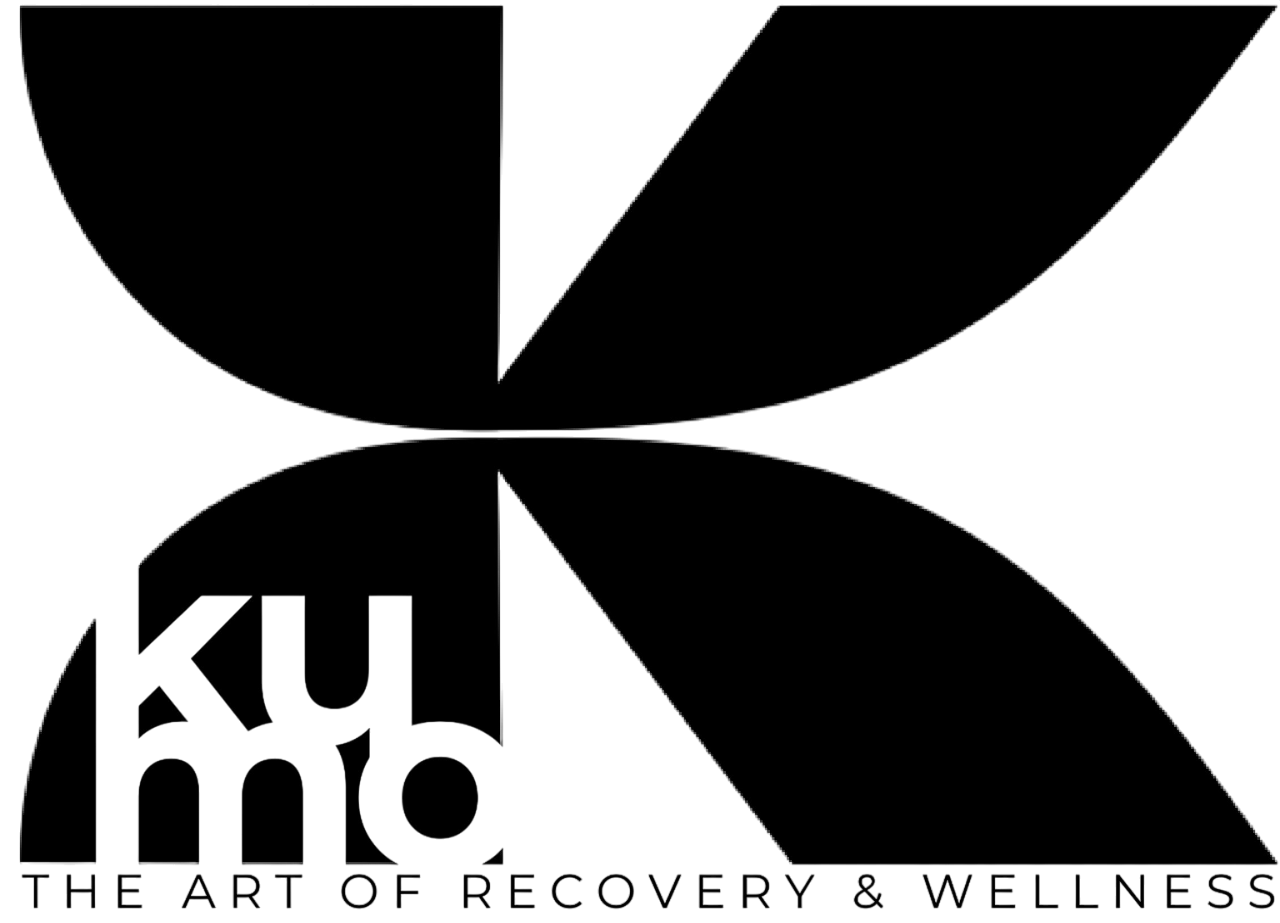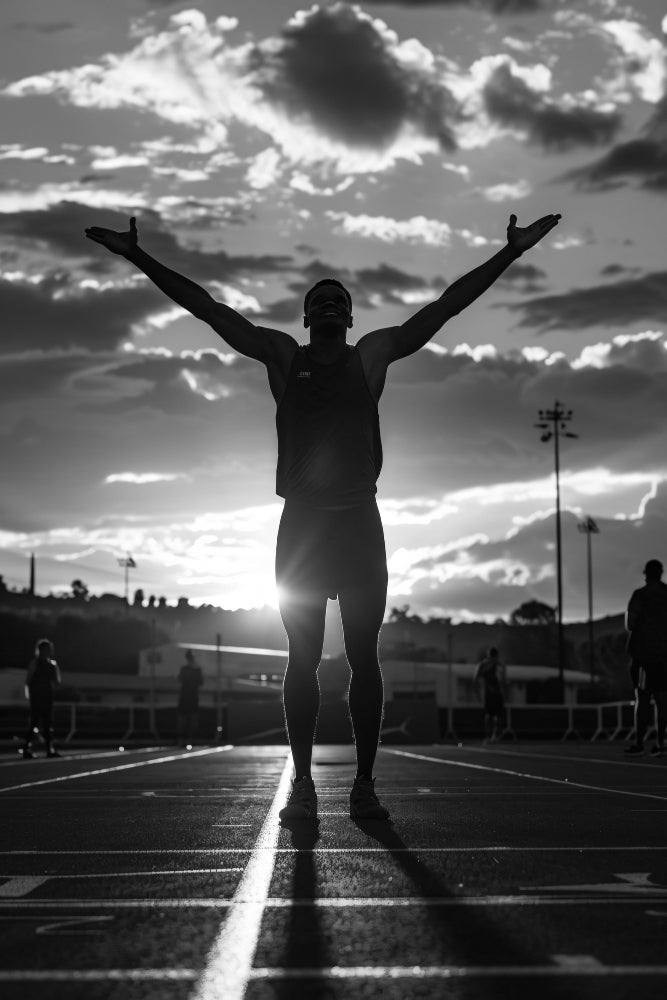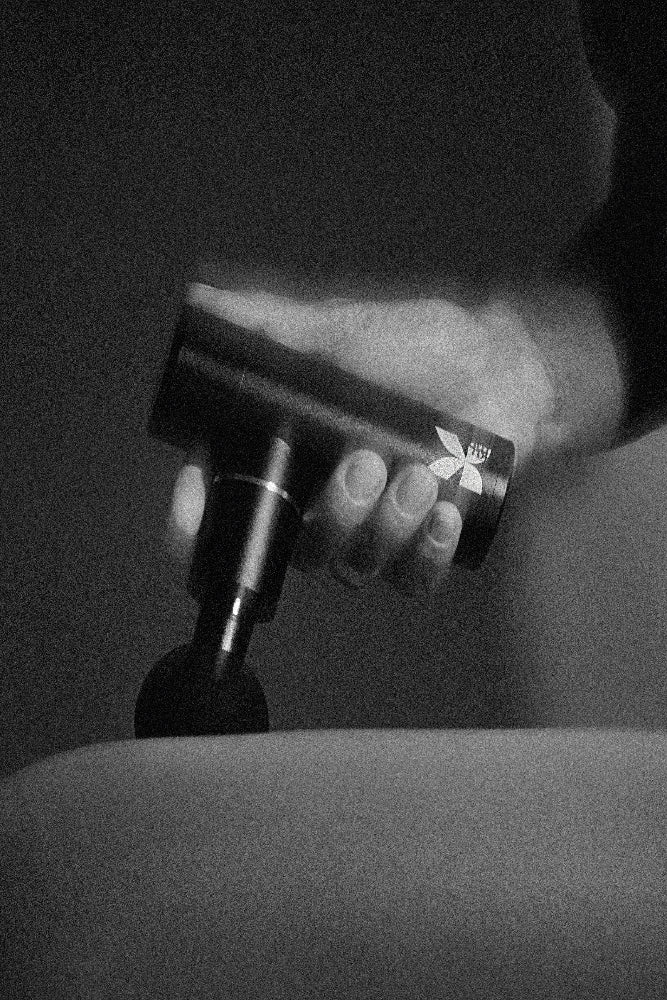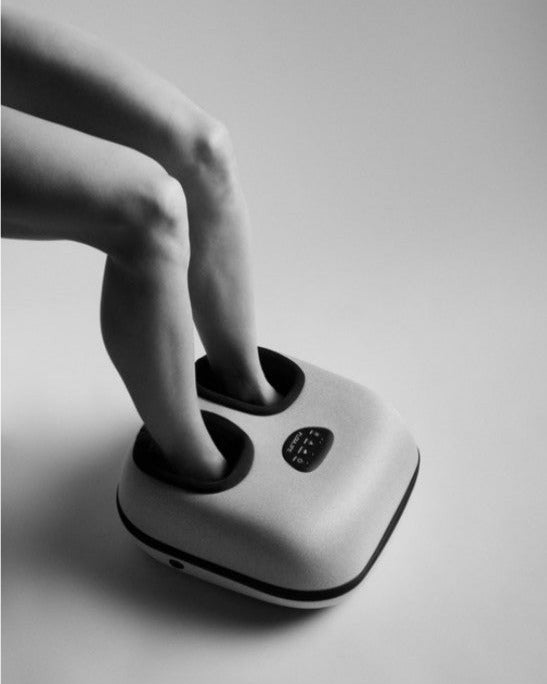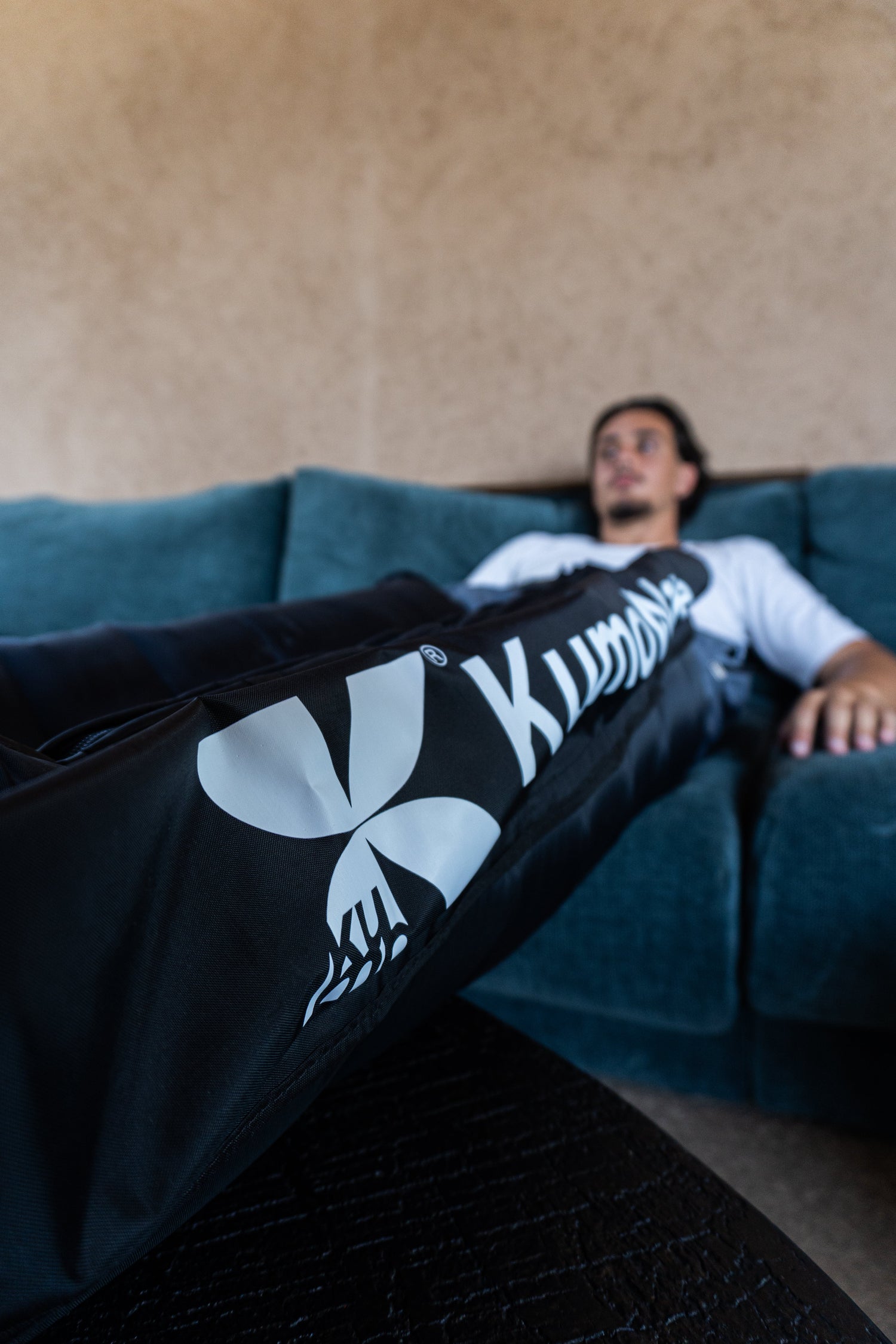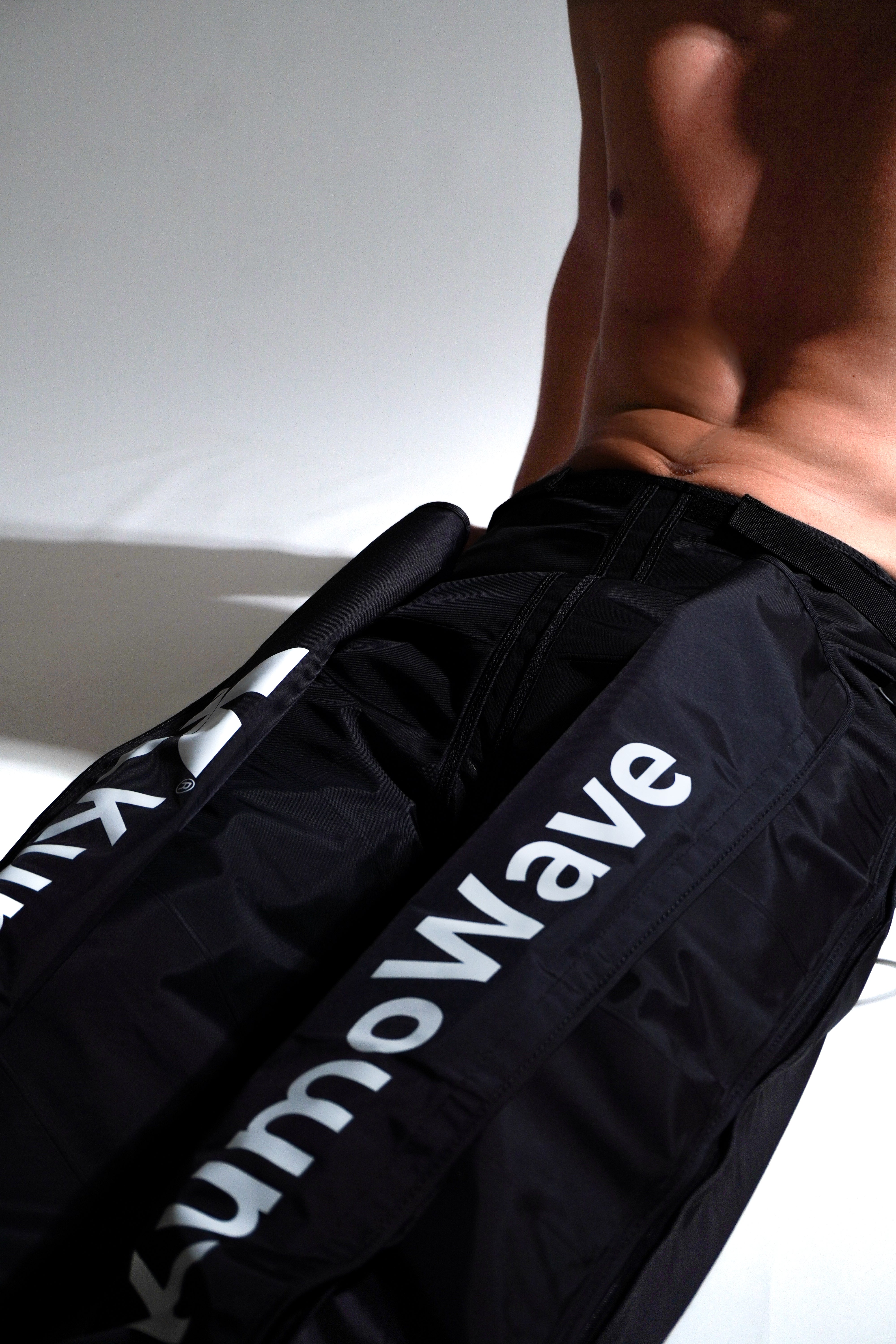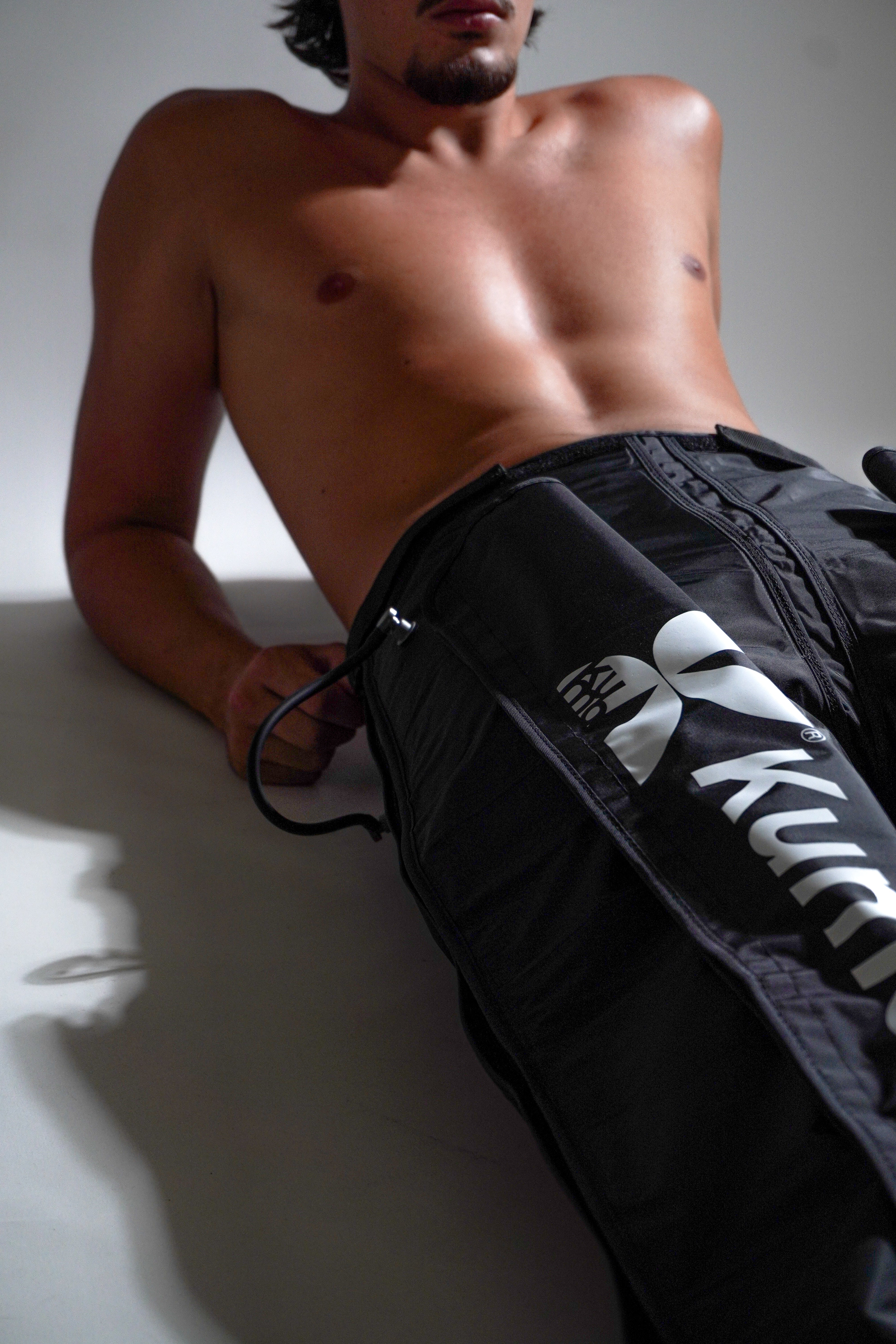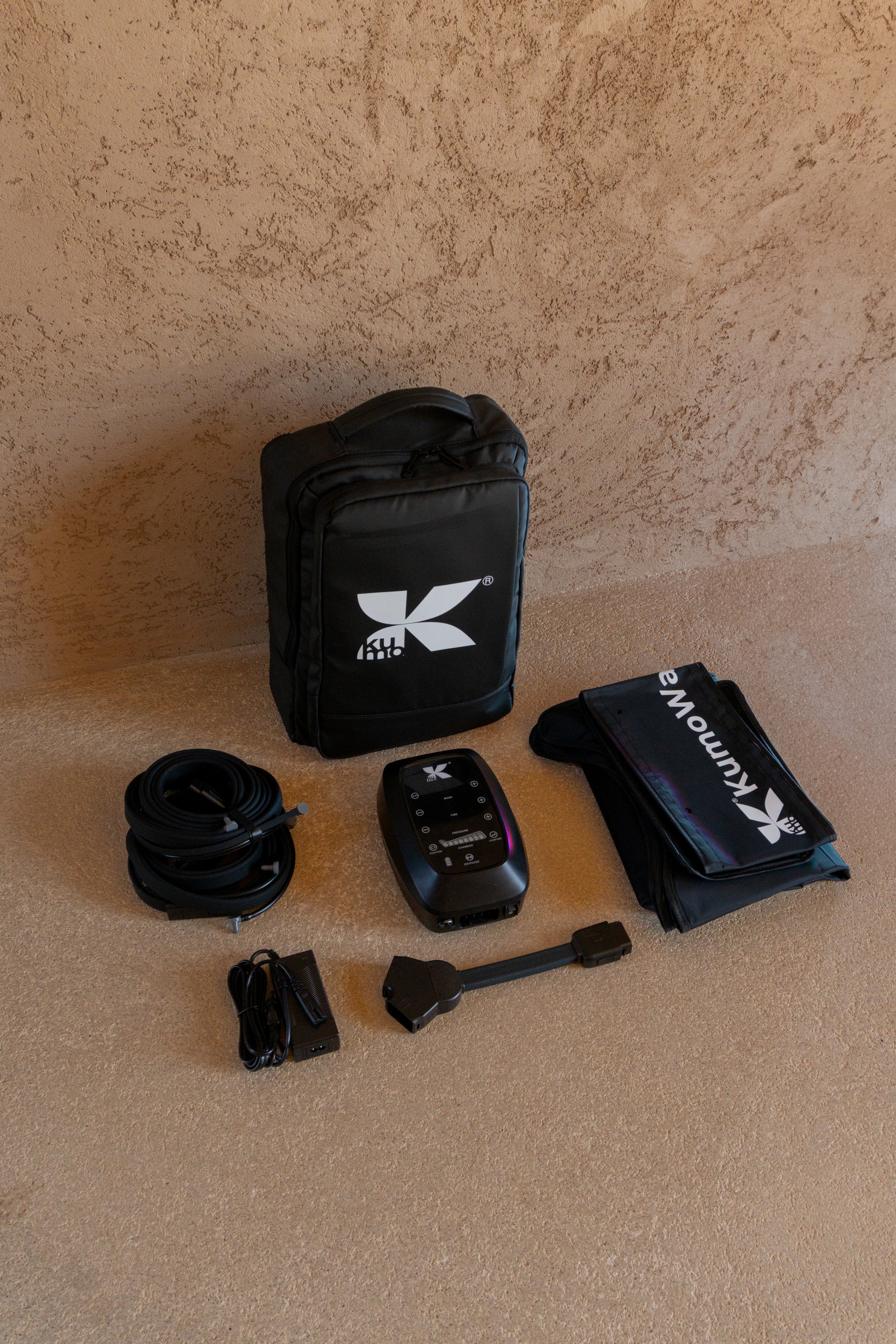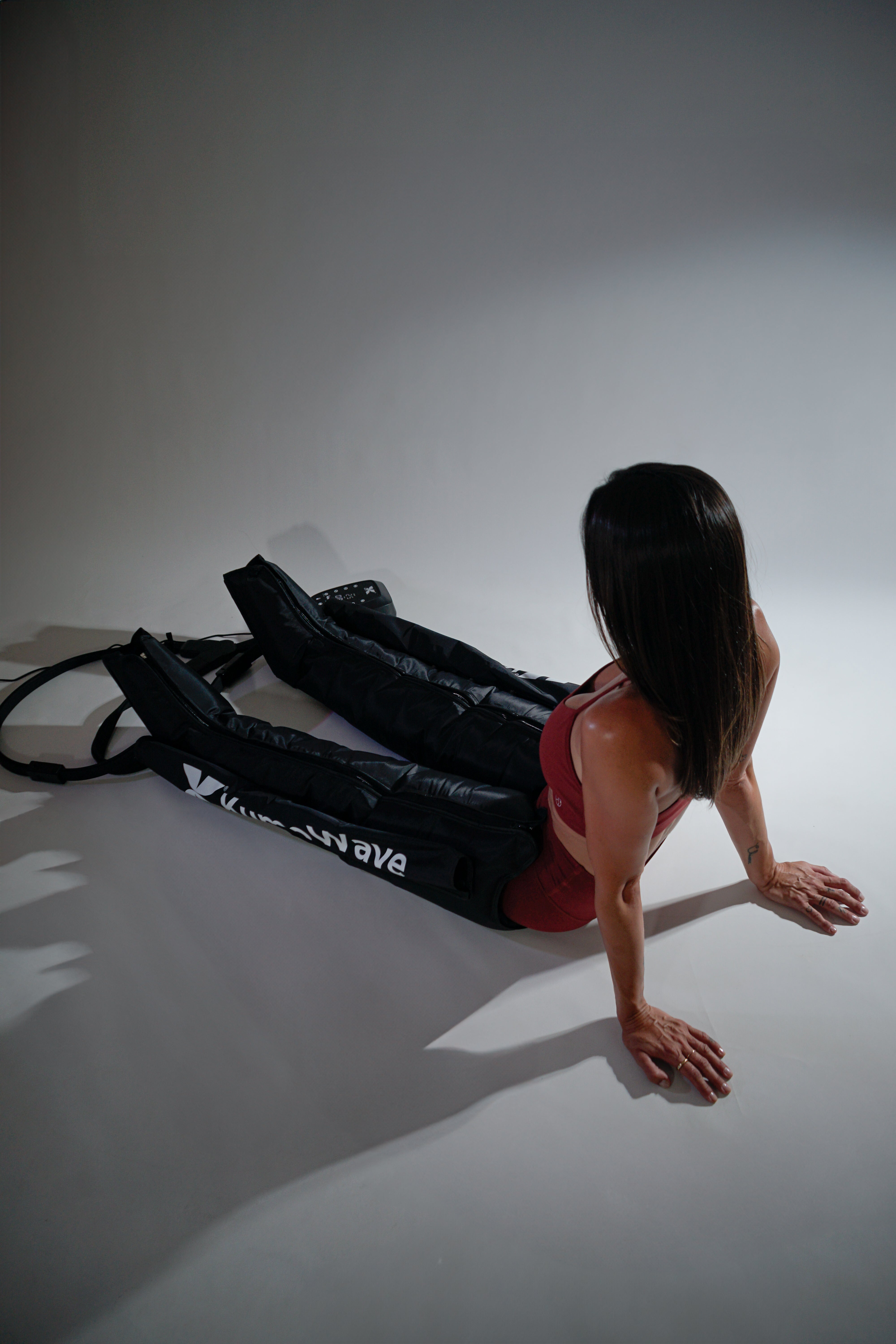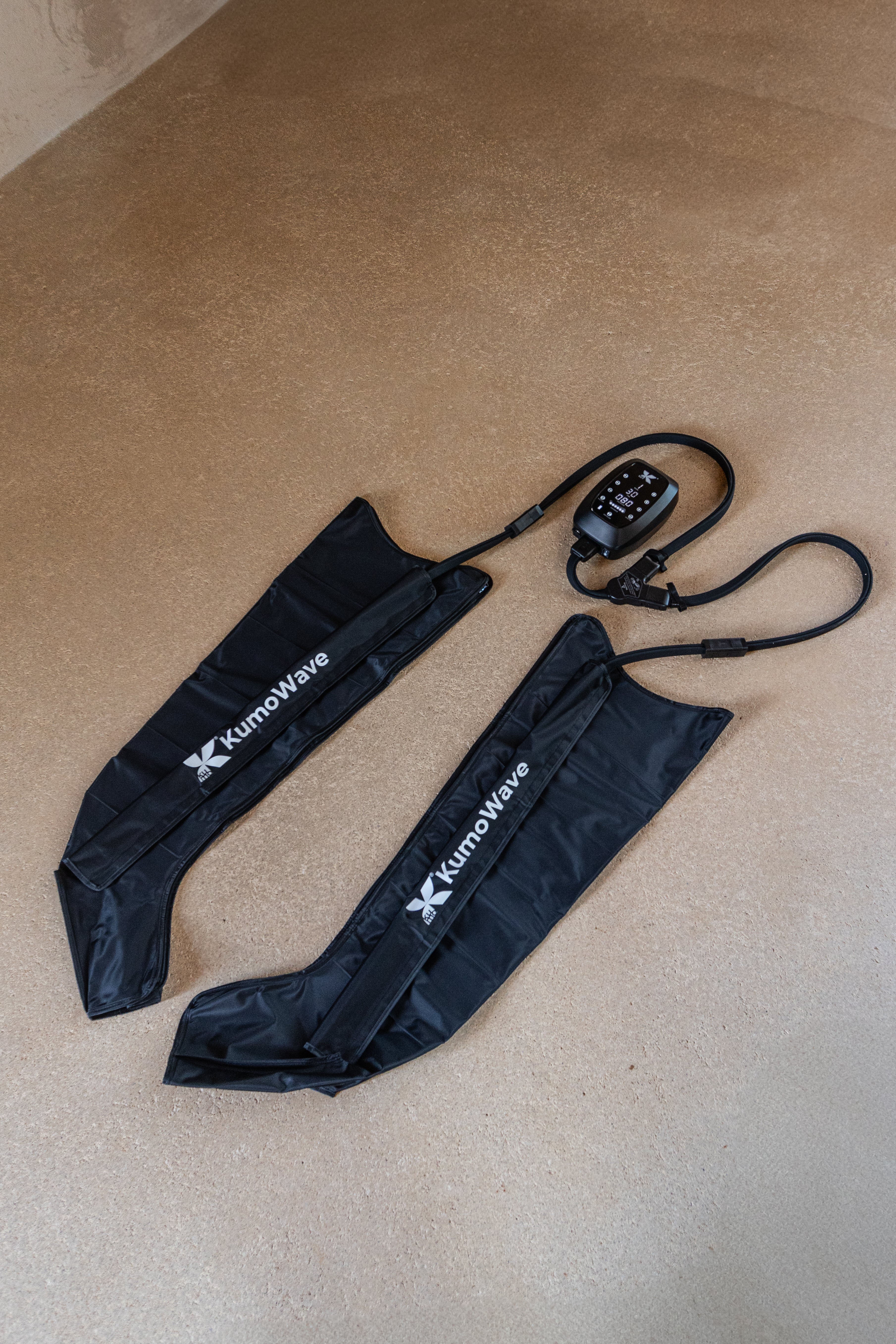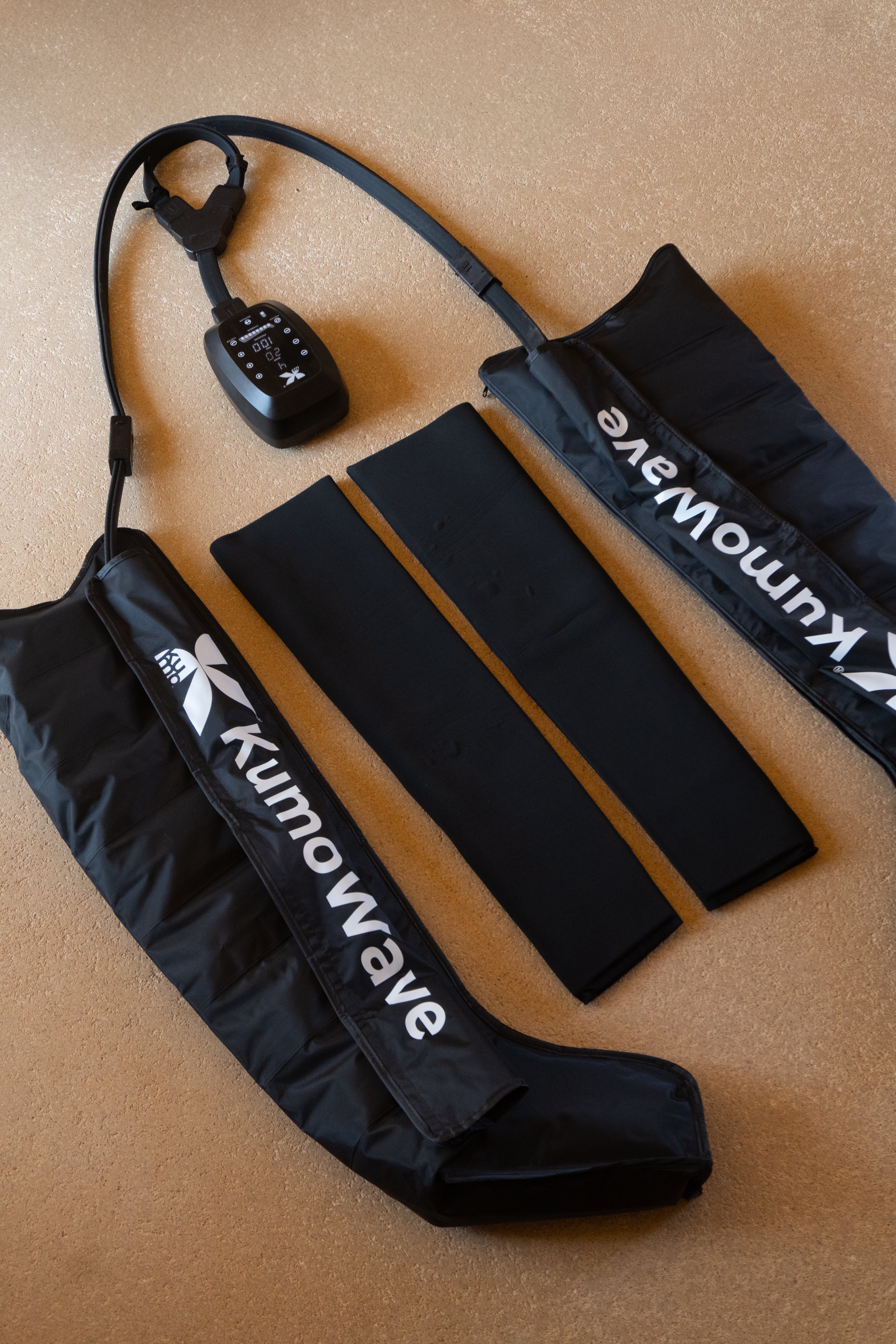Safe and effective home lymphatic drainage to relieve swelling and improve recovery.
If you're looking for a clear guide to practicing lymphatic drainage at home, here you'll find simple steps, key precautions, and mistakes to avoid. You'll learn how to apply the right pressure, follow the right direction, and combine it with habits that enhance its effects, without turning it into a medical treatment or taking unnecessary risks.
Coming soon
- Diaphragmatic breathing + “unblocking” the clavicles and armpits before massaging the arms, abdomen, or legs.
- Very gentle pressure (skin stretching), slow movements repeated 5–10 times per area.
- Always directed towards nearby lymph nodes: from distal to proximal.
- Avoid if there is an acute infection, thrombosis, heart failure, or a high-risk pregnancy; consult first.
- Complement with hydration, gentle walking, and, if appropriate, pressure therapy for tired legs.
What it is and why you should do it (without confusing it with a medical treatment)
The lymphatic system helps drain fluids and waste, participates in immunity, and assists in recovery after exercise. Gentle manual techniques can promote a feeling of lightness, reduce mild swelling, and provide relaxation. In clinical settings such as lymphedema, manual lymphatic drainage (MLD) is performed by professionals and its use is protocolized. For self-care at home, the key is gentleness, the sequence of the maneuvers, and respecting contraindications.
According to the Cleveland Clinic, MLD uses “light, skin-stretching movements” to stimulate lymphatic flow; it is not a deep, vigorous massage (source 2023). Cleveland Clinic.
Golden rule: lymphatic drainage shouldn't hurt. If it hurts, you're overdoing it.
When yes and when not
- Suitable for: heavy legs after the day, mild post-workout swelling, facial congestion, general relaxation.
- Precautions/contraindications: active infection, fever, deep vein thrombosis, heart or kidney failure, cancer without medical authorization, uncontrolled hypertension, pregnancy with complications. If you have any concerns or a chronic condition, consult a professional before starting. Useful NHS self-care guide: Lymphoedema self-care.
Preparation before starting
- Hydrate: 1 glass of water 10–15 minutes before.
- Environment: comfortable posture, calm breathing, clean and dry skin.
- Hands: Clean and free of slippery creams (a touch of light oil is sufficient).
- Duration and frequency: 10–20 minutes per session, 3–5 days per week depending on how you feel.
- Useful supports: a stool to elevate legs and a towel for the abdomen.
If you frequently suffer from strained legs, intermittent pneumatic compression can complement your routine in a practical way at home with pressure therapy boots .
Safe steps for lymphatic drainage at home
1) Diaphragmatic breathing (activate the central “pump”)
- Place one hand on your chest and the other on your abdomen. Inhale through your nose, expanding your abdomen; exhale slowly through your mouth.
- 6–10 deep breaths. This mobilizes the thoracic duct and prepares for flow.
2) “Open” drainage areas near the trunk
- Clavicles: Using your fingertips, gently stretch back and down just above your clavicles, 5–10 repetitions.
- Side neck: from behind the ear towards the collarbone, slow strokes, 5–10 repetitions per side.
- Armpits: With your arm relaxed, make gentle circular movements towards your armpit, 5–10 repetitions.
- English: Light upward and inward pressures, 5–10 reps per side.
3) Abdomen (promote central return)
- On your stomach, make wide, slow, clockwise circles, barely stretching the skin. 1–2 minutes.
- Add 3–4 diaphragmatic breaths.
4) Legs (from proximal to distal and back to proximal)
- Thigh: With both hands, very gentle glides from the middle of the thigh toward the groin, 5–10 times.
- Calf: From the top of the calf to the knee, then from the ankle to the calf. It always ends "leading" toward the groin.
- Foot and ankle: gentle strokes from toes to ankle, and finally towards knee and groin.
- Repeat on the other leg. Elevate your feet for a few minutes afterward.
Compression boots can help activate the musculoskeletal pump and fluid return after manual labor. Explore home compression therapy .
5) Arms and hands
- Upper arm: gentle strokes towards the armpit (already “open”).
- Forearm and hand: from fingers to wrist, wrist to elbow, and elbow to armpit. 5–10 repetitions per stretch.
6) Face and neck (facial decongestion)
- Always direct the movements towards the preauricular nodes and the clavicles: from the center of the face towards the ears and then down to the neck.
- Slow, light movements, 1–3 minutes.
- The American Academy of Dermatology offers helpful guidelines for gentle facial massages (AAD).
Practical hint: “Clear” the path first (collarbones, armpits, groin) and then “push” from the farthest areas toward those drains.
Quick reference table (zones, direction and repetitions)
| Area | Direction of the maneuvers | Repetitions | Note |
|---|---|---|---|
| Clavicles and neck | Towards clavicles | 5–10 | Always at the beginning |
| Armpits and groin | Towards armpit/groin | 5–10 | Proximal unlocking |
| Abdomen | Clockwise | 1–2 min | Add breathing |
| Legs | Distal to proximal | 5–10 per section | Elevates at the end |
| Arms and hands | Towards the armpit | 5–10 per section | Very gentle pressure |
| Face | Center to ears and neck | 1–3 min | Slow movements |
Common mistakes that reduce results
- Over-squeezing: The lymphatic system is superficial; pressure should be light.
- Go in the opposite direction: avoid pushing liquids towards distal areas.
- Skipping proximal “unblocking”: without opening the clavicles/armpits/groin, the flow stagnates.
- Very long sessions or sessions with intense heat beforehand: can increase congestion.
- Doing so with infection, acute pain or thrombosis: it is contraindicated.
- Don’t hydrate or move around afterwards: walking for 5–10 minutes helps consolidate the effect.
Supplements that enhance well-being
- Pressotherapy at home: ideal for tired legs after long days on your feet or training. Discover our pressotherapy boots to boost circulation and relieve pressure.
- Red light therapy: LED light can promote recovery and relaxation, useful after a massage or at night. Explore LED therapy and masks .
- Selective muscle relaxation: Before drainage, a very gentle discharge can help if there is stiffness. Use a KUMOPULSE Air massage gun on a low setting, avoiding lymph nodes and painful areas.
At KUMO, we combine aesthetics, technology, and performance to make recovery a simple and effective habit.
Aftercare and frequency
- Drink water and do 5–10 minutes of brisk walking or joint mobility.
- Avoid very tight clothing immediately afterward.
- Suggested rhythm: alternate days or short daily series depending on your body's response.
- If you work your legs intensively (sports or long days), combine 2–3 sessions per week with leg lifts and, if it works for you, pressotherapy sessions.
- If you experience pain, redness, warmth, or worsening swelling, stop practicing and seek medical advice.
Need personalized guidance on how to integrate these techniques into your routine? Contact us on the contact page.
Evidence and realistic expectations
Manual lymphatic drainage has an established place in the professional management of certain types of lymphedema, with variations depending on the case and clinical guidelines. For self-care, its gentle application can provide relief from the feeling of heaviness and relaxation, especially when combined with breathing, hydration, and movement. The Cleveland Clinic emphasizes the importance of gentle technique and the order of the Cleveland Clinic zones. The NHS recommends self-care measures such as maintaining the skin, moving regularly, and performing specific exercises to promote the return of lymphatic drainage.
For the face, the AAD details gentle, safe maneuvers that prioritize targeting nearby lymph nodes. Keep expectations realistic: at home, we seek comfort and well-being, not a substitute for medical treatment.
Frequently Asked Questions (FAQ)
How much pressure should I apply for it to be effective?
Very little. Imagine the weight of a coin stretching the skin, without sinking your fingers into the muscle. The lymphatic system is just beneath the skin, so deep pressure can "squash" rather than stimulate. If the skin slides smoothly and there's no pain, you're in the right range. Keep a slow and steady pace, with 5–10 repetitions per area. If you notice discomfort or marked redness, reduce both the intensity and the time.
Can I do lymphatic drainage every day?
Yes, short, gentle sessions (10–15 minutes) are usually well tolerated. Alternate areas and observe your body's response. For heavy legs, many people find it helpful to do this 3–5 times per week and combine it with brisk walking, leg elevation, and hydration. Avoid very long or intense sessions. If you have a medical condition, seek professional guidance before increasing the frequency.
Does it work for puffy face in the morning?
It can help gently decongest. Unblock your collarbones and neck first, then make very light movements from the center of your face toward your ears, then toward your collarbones. Take 1–3 minutes and finish with deep breathing and hydration. Avoid applying heavy pressure to your eyelids. The AAD offers safe guidelines for facial massages that you can adapt to your daily routine.
Is it better to do it before or after exercise?
It depends on the goal. Beforehand, a brief breathwork and release of energy can promote a feeling of lightness. After training, gentle drainage combined with hydration, leg elevation, and, if appropriate, pressure therapy can relieve heaviness. Avoid long sessions immediately after very intense efforts: start short and easy, and gradually increase the intensity every other day according to your tolerance.
What is the difference between lymphatic drainage and a deep tissue massage?
Lymphatic drainage uses minimal pressure and movements that stretch the skin to stimulate lymphatic flow; it doesn't seek to work deep into the muscles or "break" tension points. A deep massage applies greater pressure to release muscle tissue and fascia. For mild swelling and a feeling of heaviness, drainage is more appropriate. If muscle stiffness is present, combine it with gentle techniques or low-intensity devices, avoiding lymph nodes.
To go
- Prioritize deep breathing and unblocking the collarbones, armpits, and groin before draining the extremities and face.
- Use light pressure, slow movements, and target nearby lymph nodes; 5–10 repetitions per area are sufficient.
- Avoid doing so if you have infections, acute pain, blood clots, or heart/kidney problems; consult if you have any questions.
- Complement with water, gentle walking and, if it suits you, pressotherapy at home .
- To enhance rest and recovery, add LED therapy or gentle muscle release with KUMOPULSE Air .
- Ready to make recovery a habit? Discover KUMO 's philosophy or contact us.
